
Differences Between Light And Electron Microscope Bbc Bitesize Adiklight.co
A light microscope utilizes a beam of light to observe tiny microorganisms like mitochondria, whereas an electron microscope, such as scanning electron microscope, uses a beam of electrons to enlarge a minuscule specimen. Let's have a brief overview of these microscopes through a comparison chart, and move towards details. Table of Contents

What Are The Main Differences Between A Light Microscope And An Electron Microscope
While a light microscope uses light to illuminate specimens and glass lenses to magnify images, an electron microscope uses a beam of electrons to illuminate specimens and magnetic lenses to magnify images. The resolution (the level of image detailing) is the main difference between these two microscopes.
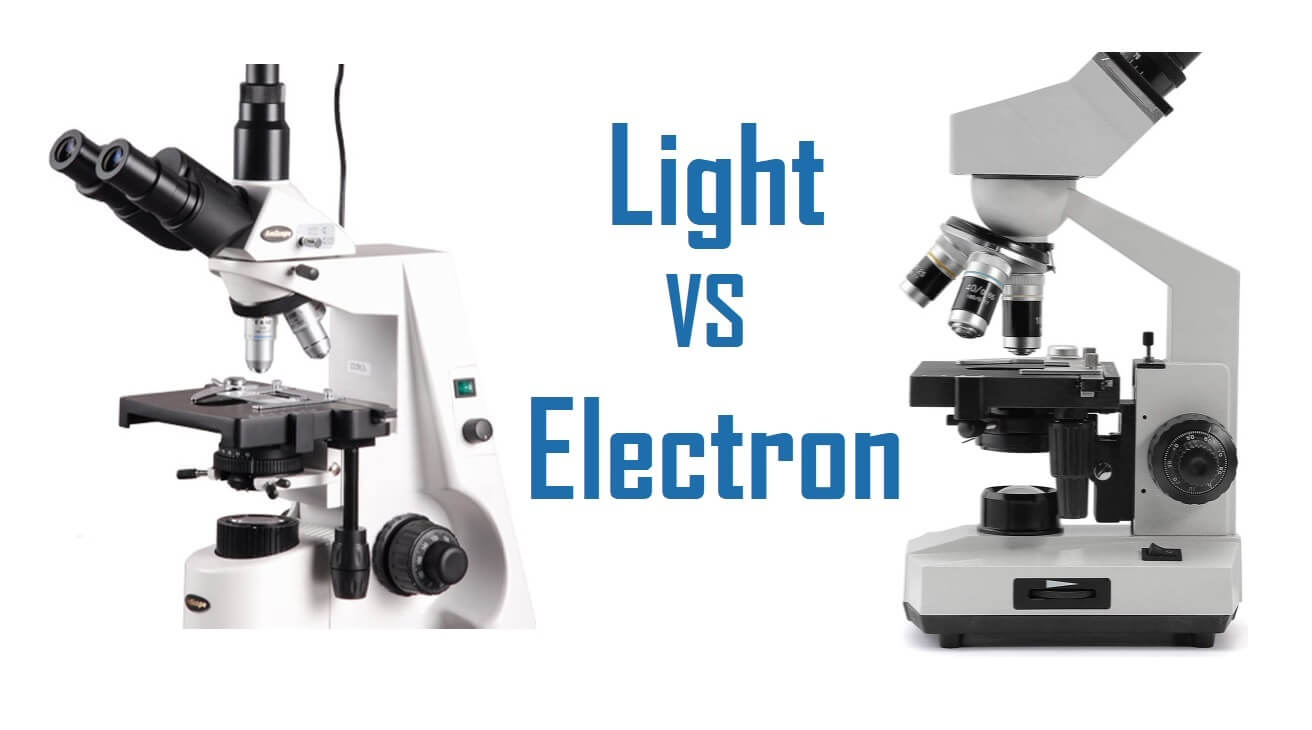
Difference between Light and Electron Microscope Microscope Crew
The key difference between light and electron microscope is that a beam of electrons is employed for magnifying the image of an object while visible light is used in the light microscope to magnify images of spotted areas of materials or biological specimens.
Different between light microscope and electron microscope.
Magnification and resolving power is the key difference between Light Microscope and Electron Microscope which is about 1000X of the magnification with resolving power of 0.2um in Light Microscope and that of Electron Microscope is 10,00,000X magnification with resolving power of 0.5nm or even less.. Microscopes are used to know the exact shape, function, and other features of microorganism.

comparison of light and electron microscopes
The main difference between light and electron microscopes is the radiation used to form an image; the 'light' and 'electron' in the names refer to the radiation being used. Using visible light as a radiation has several limitations, which the electron microscope lessens. However, light microscopes are much more practical in general use.
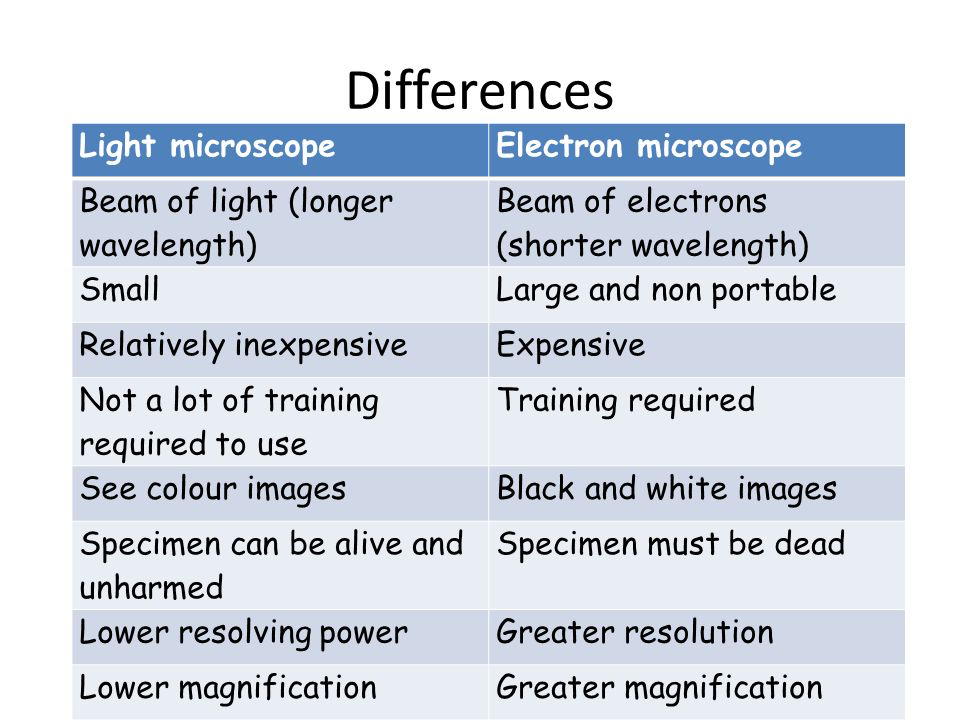
Microscopy GCSE Biology Science) Edexcel Revision Study Rocket
There are two fundamental types of microscopes; they are optical (light) microscopes which employ glass lenses and visible spectrum of light; and electron microscope which employ electromagnetic lenses and beam of electrons for image formation.
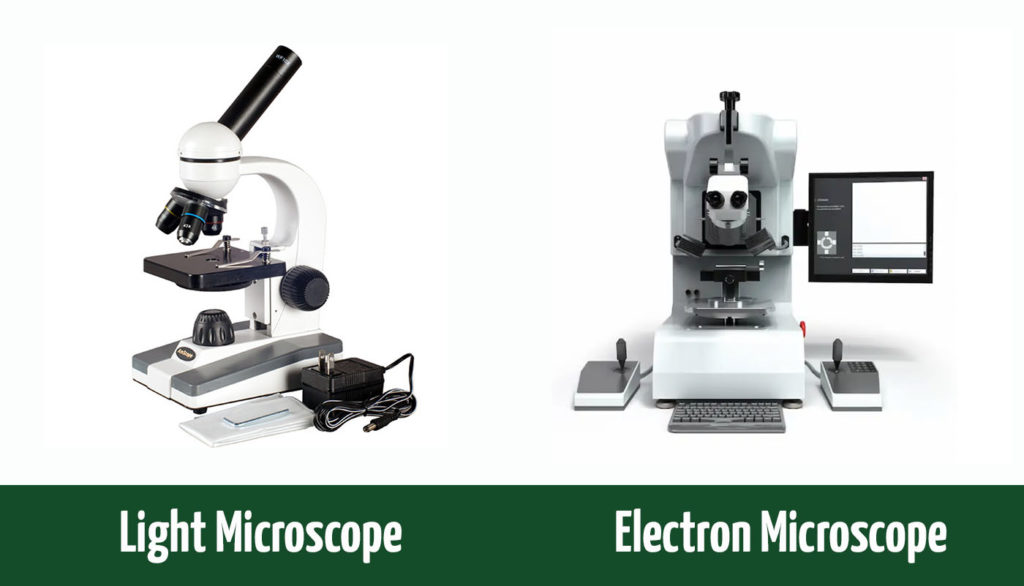
Light vs Electron Microscope What's the Difference? (With Pictures) Optics Mag
The main difference between them is that in an electron microscope, a beam of electrons is used for magnifying the image of an object while visible light is used in the light microscope to magnify images of tiny areas of materials or biological specimens.
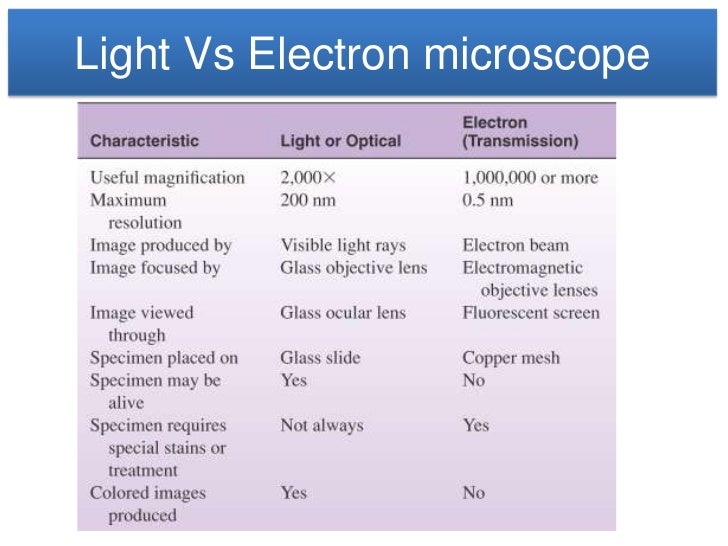
Microscope
Light Microscope. Electron Microscope. Illuminating source is the Light. Illuminating source is the beam of electrons. Specimen preparation takes usually few minutes to hours. Specimen preparation takes usually takes few days. Live or Dead specimen may be seen. Only Dead or Dried specimens are seen. Condenser, Objective and eye piece lenses are.

Light vs Electron Microscopes YouTube
Light microscopes have a resolution of roughly 200 nanometers. Naturally, electron microscopes offer a much higher resolution compared to light microscopes. The resolution of most SEM devices can be approximately 100 times greater than that of an optical variant, translating to 0.2 nm.
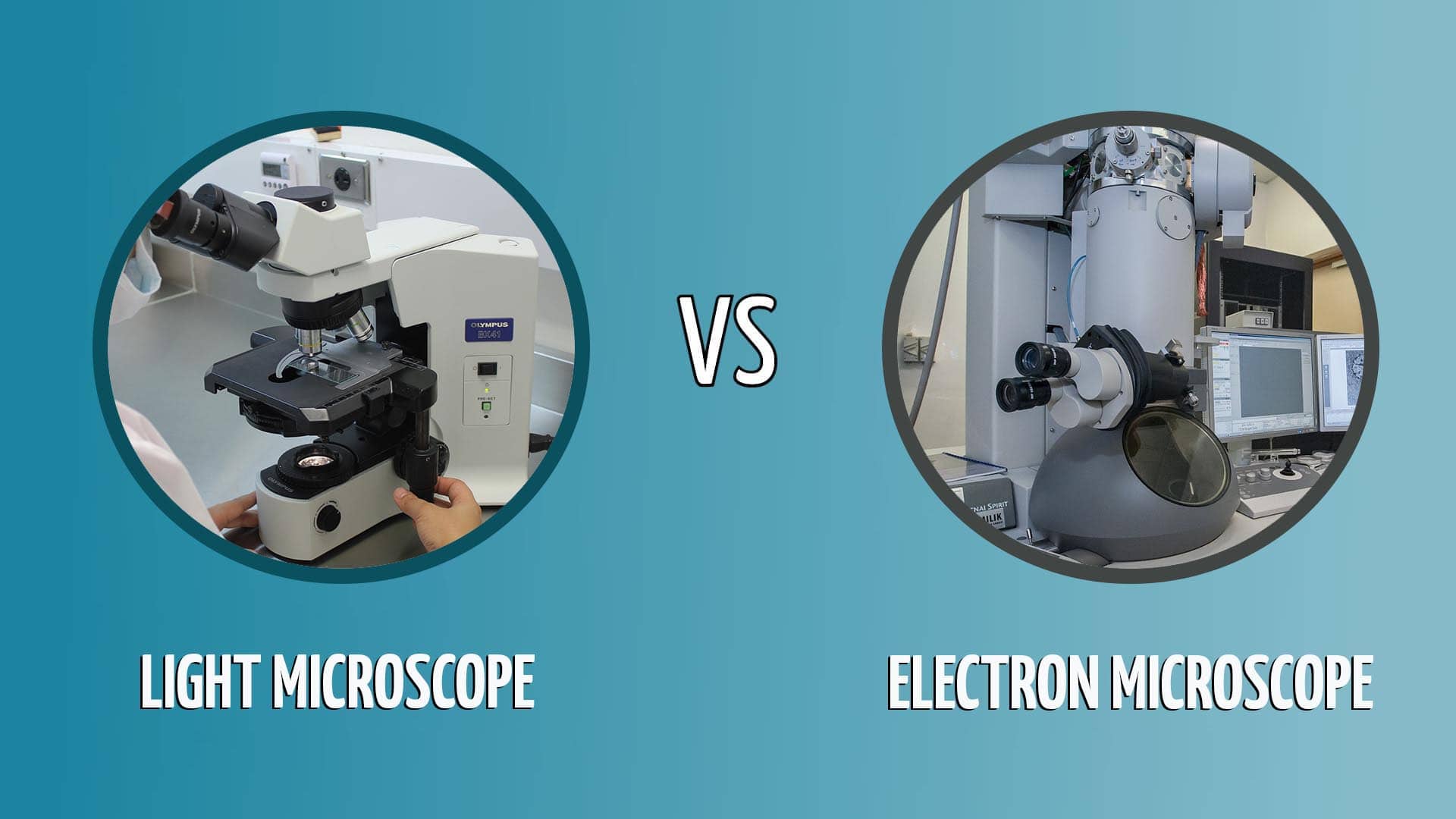
Light vs Electron Microscope What's the Difference? (With Pictures) Optics Mag
Light microscopes (optical microscopes) and electron microscopes are both used to look at very small objects. The main difference between light microscope and electron microscope is that light microscopes use beams of light to illuminate the object under examination while the electron microscope uses beams of electrons to illuminate the object.
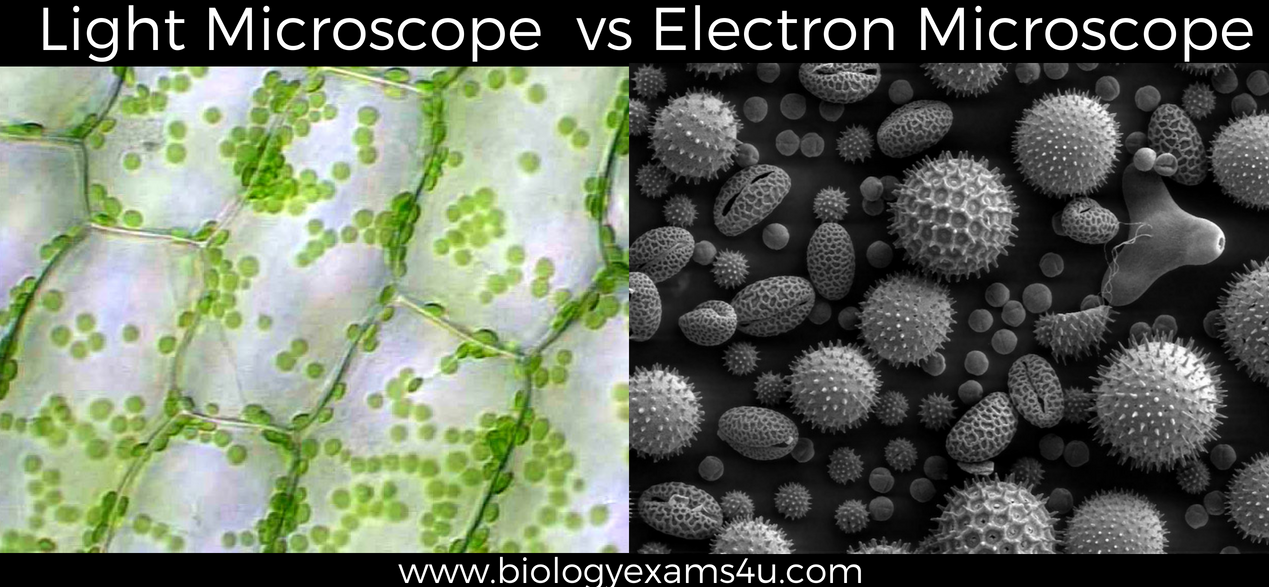
Difference between Light Microscope and Electron Microscope (Light Microscope vs Electron
Light Microscope vs Electron Microscope- 36 Major Differences April 2, 2022 by Sagar Aryal Edited By: Sagar Aryal Both light microscopes and electron microscopes use radiation (light or electron beams) to form larger and more detailed images of objects which cannot be seen clearly through an unaided eye. Light Microscope vs Electron Microscope
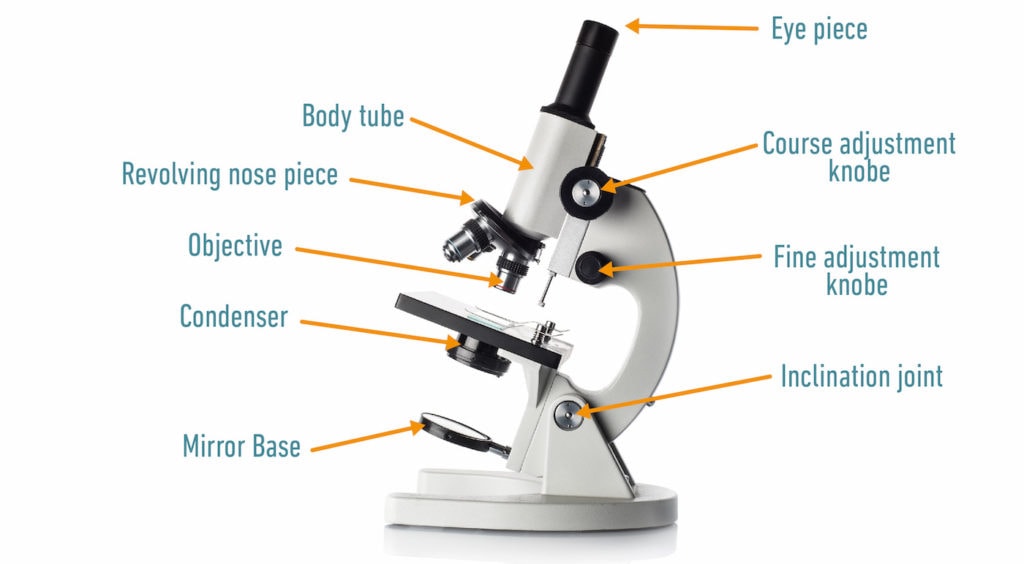
Light vs Electron Microscope What's the Difference? (With Pictures) Optics Mag
Greg Foot explains the main differences between light and electron microscopes A replica of Robert Hooke's compound microscope We need microscopes to study most cells. Microscopes.
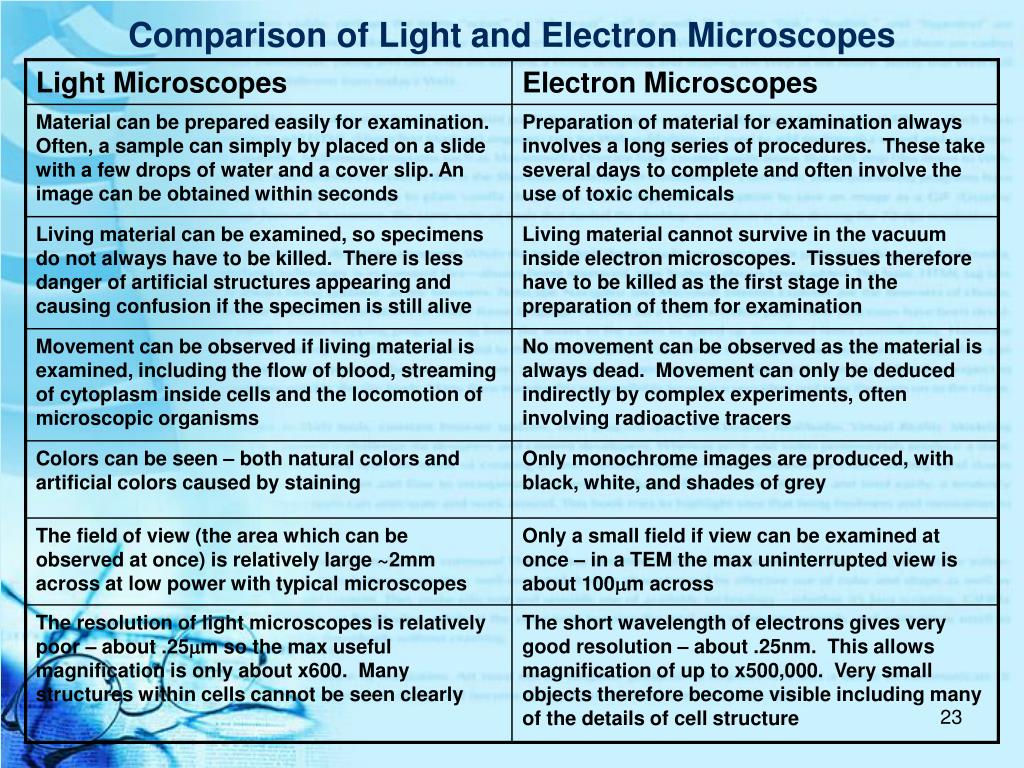
PPT Microscopes and Cells PowerPoint Presentation, free download ID6710166
The difference between light and electron microscope is mainly due to the two properties like one is the source of illumination, and the second is the type of lens. Source of illumination: It is the property of a microscope that ensures the clear visibility of the object or specimen and adds brightness to it.
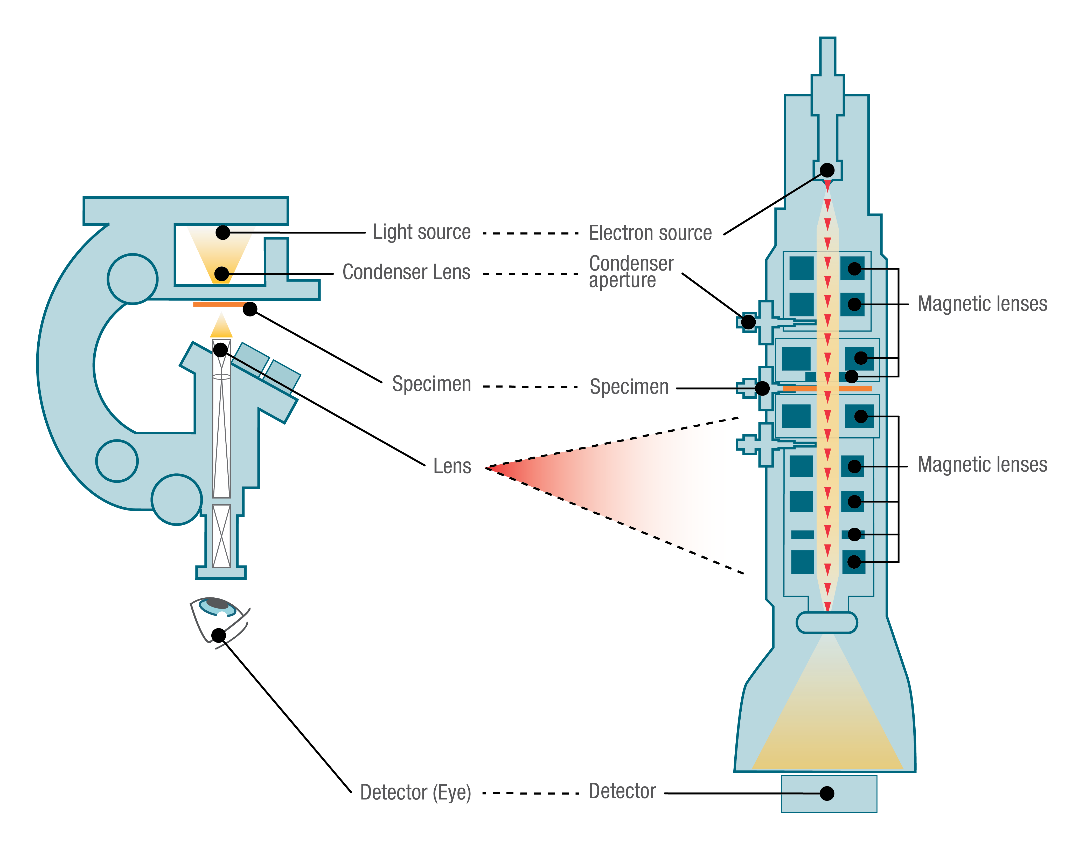
Light Microscope vs Electron Microscope Life in Atomic Resolution
Light Microscope vs Electron Microscope: 7 Main Differences Home » Microscopes Light Microscope vs Electron Microscope: Which Can Show More? With this article, you will learn what light microscope vs electron microscope really means - from their working processes to construction differences and fields of use By James Harper Reviewed By
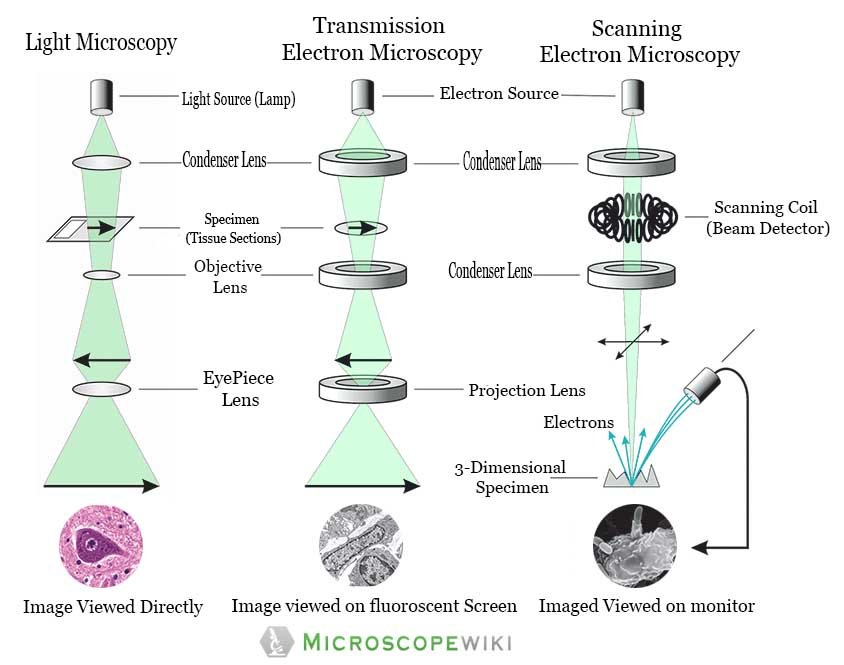
What Are The 3 Main Differences Between Light And Electron Microscopes
20 Differences Between Light Microscope And Electron Microscope (With Comparison Chart) Facebook Twitter What Is A Light Microscope? Microscopes are very important tools for scientists; they are used in microbiology, material science, mineralogy and medicine.

Difference between Light and Electron Microscopy
In a compound microscope with two lenses, the arrangement of the lenses has an interesting consequence: the orientation of the image you see is flipped in relation to the actual object you're examining. For example, if you were looking at a piece of newsprint with the letter "e" on it, the image you saw through the microscope would be "ə."